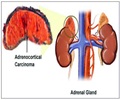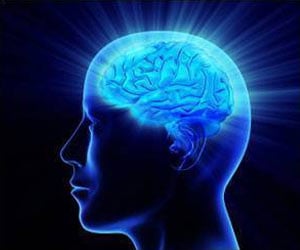A protein that drives the formation of pituitary tumors in Cushing's disease has been discovered by scientists.

"We were surprised by the scan, as TR4 and ACTH were not known to be functionally linked," says senior author Ronald M. Evans, a professor in Salk's Gene Expression Laboratory and a lead researcher in the Institute's Helmsley Center for Genomic Medicine. "TR4 is driving the growth and overexpression of ACTH. Targeting this pathway could therapeutically benefit treatment of CD."
In their study, Evans and his colleagues discovered that forced overexpression of TR4 in both human and mouse cells increased production of ACTH, cellular proliferation and tumor invasion rates. All of these events were reversed when TR4 expression was reduced.
First described more than 80 years ago, Cushing's disease is a rare disorder that is caused by pituitary tumors or excess growth of the pituitary gland located at the base of the brain. People with CD have too much ACTH, which stimulates the production and release of cortisol, a hormone that is normally produced during stressful situations.
While these pituitary tumors are almost always benign, they result in excess ACTH and cortisol secretion, which can result in various disabling symptoms, including diabetes, hypertension, osteoporosis, obesity and psychological disturbances. Surgical removal of the tumors is the first-line therapy, with remission rates of approximately 80 percent; however, the disease recurs in up to 25 percent of cases.
Drugs such as cabergoline, which is used to treat certain pituitary tumors, alone or in combination with ketoconazole, a drug normally used to treat fungal infections, have been shown to be effective in some patients with Cushing's disease. More recently, mefipristone-best known as the abortion pill RU-486-was approved by the FDA to treat CD. Despite these advances in medical therapy, the Salk scientists say additional therapeutic approaches are needed for CD.
Previous studies have found that, by itself, TR4 is a natural target for other signaling molecules in the pituitary. Small-molecule inhibitors that have been developed for other cancers could be potentially applied to disrupt this signaling cascade. "Our discovery," says Evans, a Howard Hughes Medical Institute investigator and holder of the March of Dimes Chair in Molecular and Developmental Biology, "might lead clinicians to an existing drug that could be used to treat Cushing's disease."
 MEDINDIA
MEDINDIA




 Email
Email




